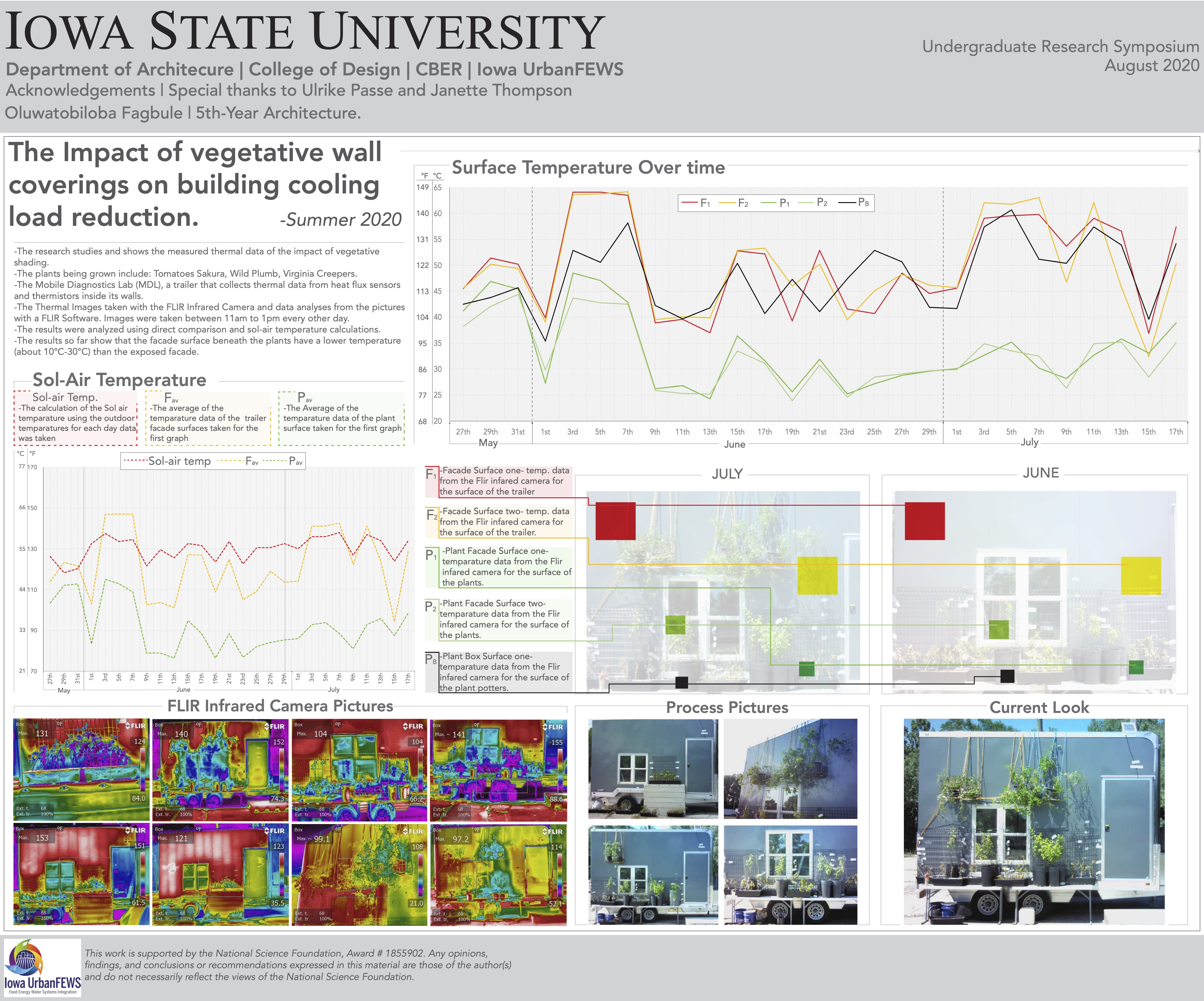A presentation by Fagbule Oluwatobiloba at the ISU Undergraduate Summer Research Symposium 2020

This poster was presented at the ISU Undergradute Research Symposium, organized by the ISU Undergraduate Research Program, and held virtually on August 4, 2020. The poster was co-authored by Oluwatobiloba Fagbule, undergraduate student in the Department of Architecture, and Ulrike Passe, Director of CBER, ISU.
Building cooling loads are driven by heat gains through enclosures. Vegetative shading reduces these gains by blocking radiation and by evaporative air cooling. Few measured data exists. This project is thus gathering thermal data on the impact of vegetative wall coverings on colling load reduction. The research studies the benefit of plants growing up the south facade of a Mobile Diagnostics Lab (MDL), a trailer that collects thermal data from heat flux sensors and thermistors inside its walls. A variety of plants (tomatoes, wild plumb, virginia creepers) were cultivated in an ISU Greenhouse this Spring and planted in front of the facade for the duration of Summer 2020. The MDL is placed in direct sunlight so it can also collect heat flux data. The plants on the south facade are acting as a barrier for the solar radiation to reduce the amount of heat energy falling onto the surface of the south wall of the trailer. Methods that were used to collect data are 16 heat flux sensors and continuous infrared images measuring surface temperatures.
The author of this poster, Oluwatobiloba Fagbule, took care of the plants and more climbing plants were added over the three months to reduce radiation heat transfer further.
Pictures of the facade were taken regularly with an infrared camera to capture surface temperatures with and without plant cover. Thermal data from the pictures were tabulated showing the relation of the surface temperature with and without plants per month.
The results were analyzed using direct comparison and sol-air temperature calculations. The results so far show that the facade durface beneath the plants have a lower temperature (10°C - 30°C) than the bare, exposed facade.